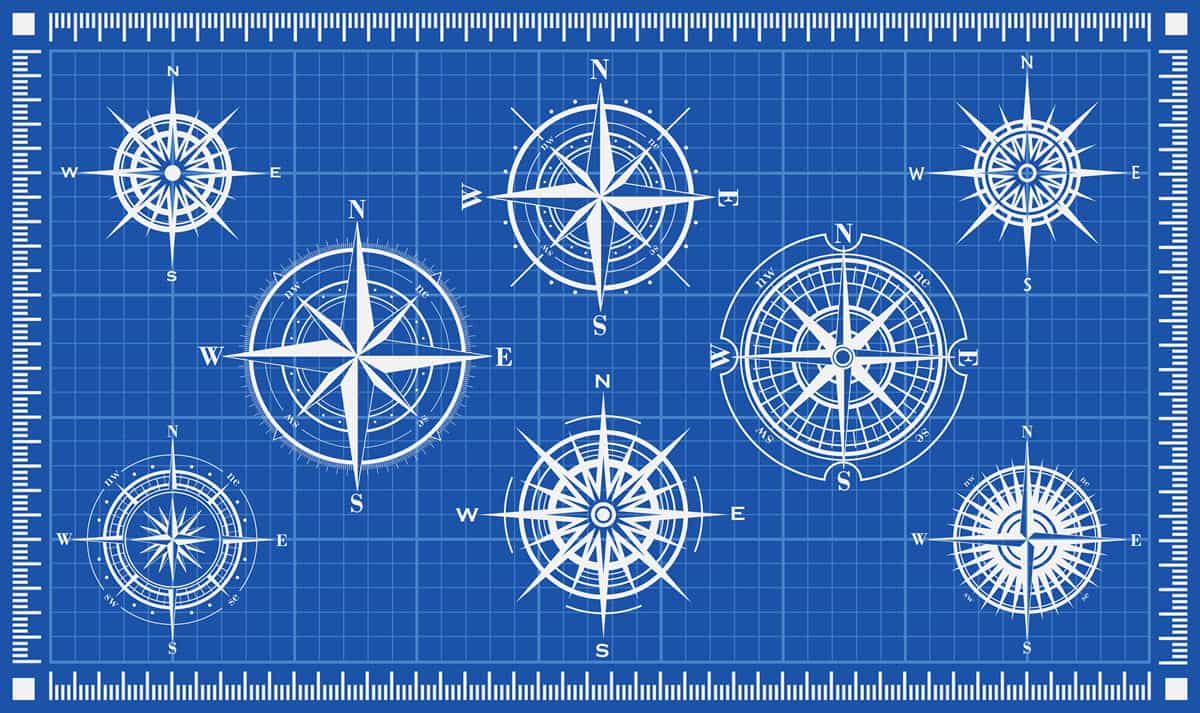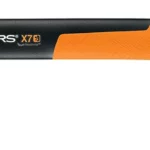
Navigating the great outdoors can be challenging, but with the right compass, you’ll always know which direction to go.
In this blog post, we’ll explore 13 various compass types, how each type of compass works, what each type of compass is commonly used for, and help you choose the perfect one for your next adventure.
Key Takeaways
- There are several compasses for outdoor enthusiasts, including magnetic, gyrocompass, GPS, prismatic, base plate, thumb, and lensatic compasses.
- Each type of compass operates differently depending on design, magnetic fields, or other technologies.
- When selecting a compass to suit your needs in navigating different terrains or environments, consider factors such as accuracy, reliability, durability, and cost.
- Choosing the compass that best suits your intended use-case scenario is essential.
Table of Contents
- Types Of Compasses
- 1. Magnetic Compass
- 2. Gyrocompass
- 3. GPS Compass
- 4. Prismatic Compass
- 5. Base Plate Compass
- 6. Thumb Compass
- 7. Lensatic Compass
- 8. Liquid Compass
- 9. Marine Compass
- 10. Solid State Compass
- 11. Qibla Compass
- 12. Astrocompass
- 13. Solar Compass
- How Each Type Of Compass Works
- What Each Type Of Compass Is Commonly Used For
- Choosing The Right Compass For Your Navigation Needs
- Final Thoughts On Compass Types
- FAQs about Different Types Of Compasses
- What are the different types of compasses?
- What is a baseplate compass?
- What is a surveyor compass?
- What is a gyro compass?
- What is an astrocompass?
- What are the different types of magnetic in compasses?
- What is a solar compass?
- What is a non-magnetic compass?
- What is a prismatic compass?
- What is the difference between magnetic compasses and gyrocompasses?
- What is an electronic compass?
Types Of Compasses
Here are the different types of compasses that we’ll explore in this post.
1. Magnetic Compass
One of the most well-known and widely used compass types is the magnetic compass, which has a rich history dating back to its invention by the Chinese in the 13th century.
The magnetic compass functions with a magnetized needle that aligns with Earth’s magnetic field, pointing towards Magnetic North – not to be confused with True North.
Campers, backpackers, hikers, and survivalists will find that a magnetic compass is indispensable for orienteering and navigating through uncharted territories.
Its simple yet effective design typically consists of a small metal or glass case housing a pivoting magnetized needle that moves freely atop a graduated dial or “compass card.” Users can easily read their bearings from this dial as they determine their direction relative to Magnetic North.
2. Gyrocompass
A gyrocompass emerges as an exceptional alternative for campers, backpackers, hikers, and survivalists looking to navigate without relying on magnetic fields. This innovative compass type utilizes a fast-spinning disc and the Earth’s rotation to accurately pinpoint true geographical north.
The inner workings of a gyrocompass share similarities with a gyroscope; however, there’s no magnetic component involved. Instead, an electrically powered spinning wheel combined with frictional forces allows the device to consistently hone in on true north.
3. GPS Compass
The GPS Compass offers campers, backpackers, hikers, and survivalists a reliable alternative to the traditional magnetic compass. As a non-magnetic compass, it relies on the Global Positioning System (GPS) to obtain accurate location data and determine true north.
Moreover, modern GPS compasses typically feature other useful functions like mapping software integration and real-time tracking capabilities. These additional features can enhance your outdoor navigation experiences by providing essential information such as distance to destination, elevation changes, and local landmarks.
For instance, if you’re hiking through dense forest or scaling an unfamiliar mountain range with little visibility of surrounding terrain – having a GPS-enabled device could make all the difference in safely navigating these challenging conditions.
4. Prismatic Compass
A prismatic compass is a compact and lightweight directional tool that is commonly used in surveying, orienteering, and navigation. It consists of an outer casing with degree markings and a rotating bezel that allows the user to set bearings and take readings.
Prismatic compasses are especially useful when measuring magnetic bearing as they eliminate parallax errors that can occur when observing through simple sighting devices.
They use a triangular glass prism to reflect both the scale and an image of the object being aimed at into one line of sight, providing greater accuracy in measurement.
5. Base Plate Compass
One type of compass well-suited for beginners and campers is the Base Plate Compass. This compass features a liquid-filled housing attached to a rectangular plastic base, with markings and measurements necessary for navigation.
The transparent base allows you to read maps while taking bearings using the compass housing. This lightweight compass is a simple and reliable tool that can easily fit in your pocket or backpack.
The Baseplate Compass is easy to use and versatile enough for outdoor activities such as hiking, camping, and geocaching. It is also commonly used as an orienteering compass.
You can pair it with other navigational tools like GPS devices or topographic maps for added precision during your adventures.
6. Thumb Compass
A thumb compass is a smaller variant of the base plate compass that fits perfectly on the thumb. It leaves one hand free, making it a favorite among hikers and campers, making for a great orienteering compass.
This type of compass has become popular amongst survivalists because its compact size makes it easy to carry in backpacks or pockets. Its simplicity makes it an ideal tool for beginners looking to improve their navigation skills.
Thumb compasses come in various shapes and sizes with different features, such as luminosity, enabling them to be used in low-light conditions.
7. Lensatic Compass
The Lensatic Compass is a type of magnetic compass that the military has used for years. Still, it’s also an excellent tool for campers, backpackers, hikers, and survivalists.
This highly durable compass uses a liquid-filled capsule with two perpendicular glass plates to magnify the card and needle inside.
One of the benefits of using a Lensatic Compass is its accuracy in finding true north. It works by aligning itself with the magnetic field of the Earth, which allows you to accurately determine your direction without relying on landmarks or other natural cues.
Additionally, this type of compass doesn’t require batteries or electronic components that can fail in remote areas where power sources are unavailable.
8. Liquid Compass
The liquid compass is a reliable and widely used compass favored by outdoor enthusiasts such as campers, backpackers, hikers, and survivalists.
A Liquid Compass operates based on fluid dynamics principles, utilizing a magnetic needle suspended in a liquid-filled housing to indicate direction.
The fluid helps stabilize the movement of the needle, allowing for more accurate readings even in challenging conditions. With its simple yet effective design, the liquid compass provides a practical and dependable tool for navigation in various outdoor activities.
9. Marine Compass
Explicitly designed for marine navigation, the marine compass is an essential tool for sailors, boaters, and navigators on the open seas.
This compass type is built to withstand the demanding conditions of marine environments, including exposure to saltwater, vibrations, and extreme temperatures. The marine compass often features a gimbal-mounted design, which helps keep the compass level and stable even as the vessel pitches and rolls.
With its ability to provide reliable readings despite the motion of the watercraft, the marine compass ensures accurate navigation and safe passage on the vast ocean.
10. Solid State Compass
The solid-state compass represents a modern advancement in compass technology, offering enhanced reliability and precision. Unlike traditional compasses that rely on a magnetic needle, the solid-state compass utilizes solid-state sensors, such as accelerometers and magnetometers, to determine direction.
These sensors measure changes in magnetic fields and motion, providing real-time data for accurate compass readings. Its solid-state construction makes this type of compass resistant to magnetic interference and can withstand rugged outdoor conditions.
The solid-state compass is an excellent choice for outdoor enthusiasts seeking a durable, high-performing navigation tool.
11. Qibla Compass
The Qibla compass holds significant importance for individuals of the Islamic faith, as it helps determine the direction of the Qibla, the sacred direction towards the Kaaba in Mecca.
This specialized compass is calibrated to align with the Qibla direction from any location worldwide. It typically features clear markings and indicators to facilitate accurate Qibla determination during prayers and religious rituals.
The Qibla compass provides a convenient and accessible tool for Muslims to ensure proper alignment and observance of their religious obligations, no matter where they are.
12. Astrocompass
It enables users to determine direction based on celestial objects like stars and planets rather than relying on magnetic fields.
The astrocompass is a unique type of compass that applies to celestial navigation and astronomy.
The astrocompass incorporates specialized sighting devices and angle-measuring mechanisms to align with specific celestial bodies and establish true north.
This compass type is particularly valuable for sailors, aviators, and explorers who navigate in remote areas or when traditional compasses may not be reliable.
The astrocompass showcases the fascinating intersection of astronomy and navigation, offering a precise and alternative method for determining direction.
13. Solar Compass
The solar compass is a specialized navigational instrument that harnesses the power of the sun for orientation in the outdoors.
It utilizes the position of the sun in the sky to determine direction and can be a valuable tool for adventurers, surveyors, and explorers.
Solar compasses work by employing a combination of a magnetic needle and a solar attachment. The attachment consists of a shadow-casting element, such as a rod or vane, which casts a shadow onto a marked dial or scale.
By aligning the shadow with the corresponding time on the dial, the user can establish the true north and navigate with accuracy.
The solar compass takes advantage of the predictable movement of the sun across the sky, allowing for reliable directional readings even in the absence of magnetic fields or other external references.
How Each Type Of Compass Works
Different types of compasses work differently depending on their design and the Earth’s magnetic field. Here’s how each type works:
- Magnetic Compass: A magnetized needle or compass card aligns with the Earth’s magnetic field, indicating magnetic north.
- Gyrocompass: Uses a spinning rotor to maintain true north orientation despite motion and magnetic interference.
- GPS Compass: Uses signals from satellites to determine location and direction.
- Prismatic Compass: It uses a glass prism to align with magnetic north, making it easier to read.
- Base Plate Compass: It has a rectangular baseplate for measuring map distances and an orienting arrow for finding direction.
- Thumb Compass: Used by orienteers, it sits on the thumb, making it easy to use while navigating forested areas.
- Lensatic Compass: Commonly used in military navigation, it uses a lens for directional readings and sighting targets.
- Liquid Compass: The liquid compass operates by utilizing a magnetic needle suspended in a liquid-filled housing, allowing for stable and accurate direction readings.
- Marine Compass: Utilizes a gimbal-mounted design to remain level and stable amidst the motion of the water, ensuring accurate navigation for sailors and boaters.
- Solid State Compass: Relies on solid-state sensors, such as accelerometers and magnetometers, to measure changes in magnetic fields and motion, providing real-time data for precise compass readings.
- Qibla Compass: Calibrated to align with the sacred direction of the Kaaba in Mecca, helping Muslims determine the qibla direction for prayers and religious rituals.
- Astrocompass: The astrocompass utilizes specialized sighting devices and angle-measuring mechanisms to align with celestial objects, enabling precise navigation based on stars and planets rather than magnetic fields.
- Solar Compass: Works by utilizing a magnetic needle and a shadow-casting element, such as a rod or vane, which aligns with the sun’s position and casts a shadow onto a marked dial or scale, allowing users to establish true north based on the shadow’s alignment with the corresponding time.
That’s how each type of compass works. Knowing these differences can help you choose the right one for your needs.
What Each Type Of Compass Is Commonly Used For
- Magnetic Compass: The magnetic compass is commonly used for general navigation purposes, providing direction based on the Earth’s magnetic field.
- Gyrocompass: The gyrocompass is commonly used for navigation in situations where reliance on magnetic fields is not ideal, utilizing a spinning disc and Earth’s rotation to determine true north accurately.
- GPS Compass: The GPS compass is commonly used for outdoor navigation, relying on the Global Positioning System (GPS) to obtain accurate location data and determine true north.
- Prismatic Compass: The prismatic compass is commonly used in surveying, orienteering, and navigation, providing accurate measurements of magnetic bearings with the help of a triangular glass prism.
- Base Plate Compass: The base plate compass is commonly used by beginner hikers and campers, featuring a liquid-filled housing attached to a rectangular plastic base for navigation purposes.
- Thumb Compass: The thumb compass is commonly used by orienteering enthusiasts, hikers, and campers, as it conveniently attaches to the thumb, leaving one hand free for other activities.
- Lensatic Compass: The lensatic compass is commonly used by the military, as well as campers, backpackers, hikers, and survivalists, offering durability and accurate directional readings by aligning with the Earth’s magnetic field.
- Liquid Compass: The liquid compass is commonly used by outdoor enthusiasts for general navigation, employing a magnetic needle suspended in a liquid-filled housing for stable and accurate direction readings.
- Marine Compass: The marine compass is commonly used by sailors, boaters, and navigators for marine navigation, with features like a gimbal-mounted design to maintain stability in challenging water conditions.
- Solid State Compass: The solid-state compass is commonly used for outdoor activities, offering reliability and precision through the use of solid-state sensors to measure magnetic fields and motion.
- Qibla Compass: The qibla compass is commonly used by Muslims to determine the direction of the Qibla (the Kaaba in Mecca) for prayers and religious rituals.
- Astrocompass: The astrocompass is commonly used in celestial navigation and astronomy, aligning with celestial objects to determine direction, making it valuable for sailors, aviators, and explorers.
- Solar Compass: A solar compass is commonly used for outdoor navigation and surveying tasks, relying on the position of the sun in the sky to determine direction.
When choosing the right compass for your navigation needs, several factors must be considered. One of the most important things you need to determine is what type of activities you will be using the compass for, whether hiking in rough terrain, camping in unfamiliar areas, or navigating through dense forests.
Another factor to consider when selecting a compass is its accuracy and reliability. A good quality magnetic or prismatic compass with adjustable sights can provide accurate readings even in low-light conditions.
Lastly, remember cost when deciding on which compass is right for your needs. While more expensive models might offer additional features like illuminated dials or anti-glare coatings on lenses (especially useful in sunny weather), they may not necessarily perform better than more affordable options.
Ultimately finding the perfect match between you and your chosen instrument involves trial-and-error experimentation by testing out different types until one clicks with both personal preferences while meeting requirements essential towards surviving harsh outdoor environments successfully!
Final Thoughts On Compass Types
Numerous types of compasses are available, each with unique advantages and features. Whether you’re a camper, hiker, backpacker, or survivalist, choosing the right compass is critical to ensure a successful navigation experience.
Magnetic compasses are the most typical type of compass and are on every bushcraft gear list. They work by aligning themselves with magnetic lines. However, there are also non-magnetic compasses, including prismatic, baseplate, and surveyor’s compasses which offer greater accuracy and sophistication.
The lensatic compass is an ideal choice for military personnel due to its rugged construction, while gyrocompasses offer advanced technology for marine navigation.
FAQs about Different Types Of Compasses
What are the different types of compasses?
There are various types of compasses such as baseplate compass, surveyor compass, gyro compass, astro compass, solar compass, non-magnetic compasses, and more.
What is a baseplate compass?
A baseplate compass is a compass that is great for hiking and trekking, it has a clear plastic baseplate that gives a good view of the map underneath. It can be used to measure the distance between two points.
What is a surveyor compass?
A surveyor compass is a commonly used compass in construction. It is larger than a baseplate compass and it has a clinometer to measure the slope of the ground, a sighting mirror for accurate readings, and a locking mechanism to hold it in place.
What is a gyro compass?
A gyro compass is a type of compass that has a spinning wheel that maintains its orientation and provides an accurate reading even when the ship is turning or rolling on waves. It is commonly used on boats and ships.
What is an astrocompass?
An astrocompass is a type of compass that navigators use to provide an accurate reading of true north. It uses the stars and the sun as a reference to calculate the north instead of the magnetic poles.
What are the different types of magnetic in compasses?
A compass has two types of magnetic: true north and magnetic north. True north points to the North Pole, while magnetic north points to the magnetic pole.
What is a solar compass?
A solar compass is a type of compass that uses the position of the sun to determine the cardinal directions. It is helpful when a magnetic compass is not reliable.
What is a non-magnetic compass?
A non-magnetic compass is a compass that uses a different method to calculate cardinal direction instead of the earth’s magnetic field. This type of compass can be used in areas with high levels of magnetic interference.
What is a prismatic compass?
A prismatic compass is a surveyor’s hand compass used to measure a line’s magnetic bearing. It has a prism to read the compass card and a sighting device to align the compass with the line being measured.
What is the difference between magnetic compasses and gyrocompasses?
Magnetic compasses use the earth’s magnetic field to provide the direction, while gyrocompasses use a spinning wheel to maintain the device’s orientation.
What is an electronic compass?
An electronic compass is a compass that uses magnetic field sensors, a clock, and a microprocessor to determine and display the direction. It is commonly found in mobile phones and GPS devices.







Leave a Reply